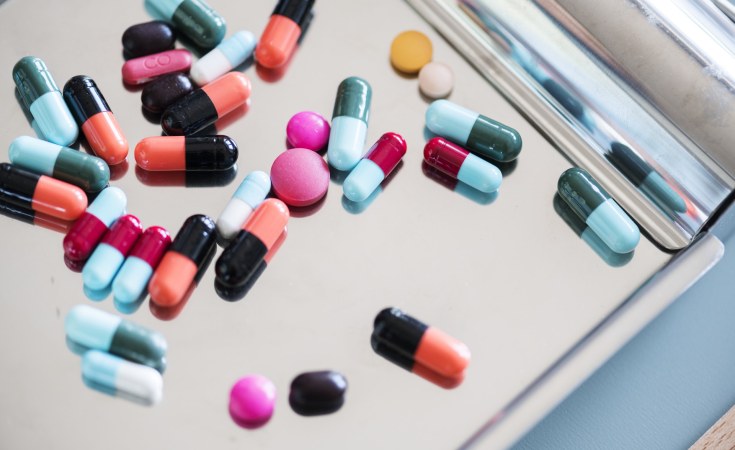Africa: True Scale of Antibiotic Resistance Worldwide Revealed

Based on estimates across 204 countries and territories, the ‘Global burden of bacterial antimicrobial resistance in 204 countries and territories in 2019’ paper provides the most comprehensive estimate of the global impact of antibiotic resistance to date and reveals that AMR has now become a leading cause of death globally. Published in The Lancet following rigorous external peer review by independent experts, the paper highlights specific areas of concern and equips governments and health communities with the information they need to act quickly and develop a proportionate response.
Estimates included in the paper show that AMR is a leading cause of death globally, higher than HIV/AIDS or Malaria. In Sub-Saharan Africa, over 255,000 people died as a direct result of AMR in 2019 – around half of these were children under the age of 5.
Antimicrobial Resistance (AMR) occurs when bacteria, viruses, fungi and parasites change over time and no longer respond to medicines, making infections harder to treat and increasing the risk of disease spread, severe illness and death. Common infections such as lower respiratory tract infections, bloodstream infections, and intra-abdominal infections are now killing hundreds of thousands of people every year because bacteria have become resistant to treatment. This includes historically treatable illnesses, such as pneumonia, hospital-acquired infections, and foodborne ailments
Sub-Saharan Africa faces the highest burden of AMR, with 255,000 deaths attributable to AMR in a single year2 and a particularly high number from vaccine preventable pneumococcal bacterial disease.
The data shows that the leading pathogens in the Sub-Saharan Africa region are S. pneumoniae (40,400 deaths attributable to AMR) and K. pneumoniae (50,800 deaths attributable to AMR). The paper highlights that everyone is at risk from AMR, but infants and children are disproportionately affected. In 2019, 129,000 deaths attributable to AMR in Sub-Saharan Africa were in children under the age of 5. This includes a high number of infections from E. coli, usually acquired through contaminated food and water. Highlighting the need for greater action to tackle the problem of AMR, Dr Mirfin Mpundu, Director of ReAct Africa, commented on the findings: “Momentum that the global community built following the AMR Global Action Plan in 2015 has slowed down and there has not been a proportionate response to the gravity of the problem.” National Action Plans on AMR are not being rolled out fast enough to control this threat. Past projections estimated that as many as 10 million annual deaths from AMR could occur by 2050.[4] In 2022, as we now have access to these robust estimates, we know that we are already far closer to this figure than expected. In September 2020, the African Union Heads of States and Governments endorsed a common position on AMR and across the continent, 33 countries have recognised the threat and created National Action Plans in response.
While progress has been made, the necessary funding and capacity to implement such plans are often falling behind, with COVID-19 further disrupting the global health agenda. Health systems in sub-Saharan Africa and around the world depend on effective antibiotics. AMR is threatening the ability of clinicians to keep patients safe from infections and undermining their ability to carry out essential medical practice safely, including surgery, childbirth and cancer treatment since infection is a risk following these procedures. Discussing the importance of the new estimates to direct urgent action, Director of the Institute for Health Metrics and Evaluation, Professor Chris Murray said: “This paper is a critical step that allows us to see the full scale of the challenge. We now need to leverage these estimates to course-correct action and drive innovation so we can control the threat and avoid further preventable deaths.”
At a global level, we are not innovating fast enough to develop effective vaccines, medicines and treatments:
Between 1980 and 2000, 63 new antibiotics were approved for clinical use. Between 2000 and 2018, just 15 additional antibiotics were approved.
Out of the seven deadliest drug-resistant bacteria, vaccines are only available for two (Streptococcus pneumoniae and Mycobacterium tuberculosis).
Whilst all seven of the leading bacteria have been identified as ‘priority pathogens’ by the World Health Organization (WHO) only two have been a focus of major global health intervention programmes – S. pneumoniae (primarily through pneumococcal vaccination) and M. tuberculosis.
There are immediate actions that can help countries around the world protect their health systems against the threat of AMR:
We need to take greater action to monitor and control infections, globally, nationally and within individual hospitals.
We must accelerate our support for infection prevention and control, as well as expand access to vaccines and clean water and sanitation.
We must optimise our use of antibiotics unrelated to treating human disease, such as in food and animal production, taking a One Health* approach and recognising the interconnection between human and animal health.
It’s time to be more thoughtful about our use of antimicrobial treatments – expanding access to lifesaving antibiotics where needed, minimising use where they are not necessary to improve human health, and acting according to WHO Global Action Plan and AWaRe guidelines.
We must increase funding at every stage of the development pipeline for new antimicrobials targeting priority pathogens – from research for high priority bacteria, such as K. pneumoniae and E. coli, to securing access through innovative market solutions.
The GRAM leadership team at the University of Oxford, Prof Christiane Dolecek, Dr Catrin Moore, and Prof Benn Sartorius, also commented: “Being able to measure AMR, and compare it with other major health threats, is essential to addressing its serious consequences. This work incorporates the best available data and provides reliable evidence describing the substantial mortality and morbidity caused by AMR globally. We anticipate that policymakers will use these results as we intended them, to drive action.” Authors of the paper are hopeful that, with this new data, the world is better equipped than ever to correct the trajectory. COVID-19 has demonstrated the importance of global commitments to infection and control measures, such as hand washing and surveillance, and rapid investments in treatments. Talking about the lessons learnt from COVID-19, Head of Intervention, Infectious Disease at Wellcome Trust, Tim Jinks said: “The COVID-19 pandemic has highlighted the importance of global collaboration: political leaders, the healthcare community, the private sector and the public working together to tackle a global health threat. Like COVID-19, we know what needs to be done to address AMR, but we must now come together with a sense of urgency and global solidarity if we are to be successful.” Keith Klugman, Director of the Pneumonia program, at the Bill & Melinda Gates Foundation also added: “The findings of this comprehensive analysis highlight the staggering burden of AMR, particularly in low-resource settings. In these settings, AMR is tied to a number of persistent, yet solvable challenges including access to effective vaccines and antibiotics. These data are a call to action on the Sustainable Development Goals to prevent these infections and deaths.”



